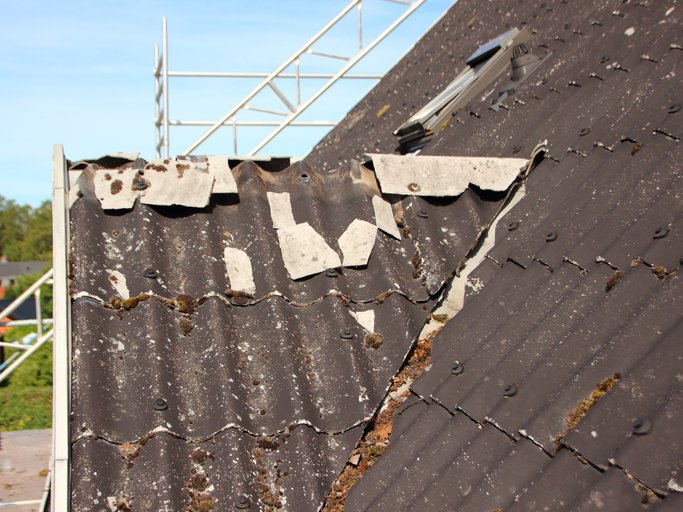NEW LENDING RULES CREATE POTENTIAL FINANCING OBSTACLES FOR SOME CONDOMINIUMS
There are many reasons condominium boards should not defer essential maintenance in the communities they govern. New rules for condominium loans have added another one. Owners in condominium communities with “significant” maintenance issues may find it difficult to sell their units or refinance their mortgages.
The lending rules, adopted by secondary market giants Fannie Mae and Freddie Mac, require mortgage lenders to scrutinize the structural and financial health of condominiums and to reject loans in communities that fail to meet specified standards for building maintenance and financial management. These new requirements, which took effect September 18, will affect virtually all community associations because Fannie and Freddie purchase more than 70 percent of all residential mortgage loans originated by banks and mortgage companies. Most mortgage lenders won’t approve loans they can’t sell.
Under the new guidelines, community associations will be ineligible for secondary market financing if they have “significant deferred maintenance,” defined as:
Situations “severe enough to affect the safety, soundness, structural integrity, or habitability” of the community;
Conditions requiring “substantial repairs and rehabilitation” of structures, “including many major components”; and
Conditions that “imped[e] the safe and sound functioning of one or more….major structural or mechanical elements, including but not limited to the foundation, roof, load-bearing structures, electrical system, HVAC, or plumbing.”
Records Review
The rules specifically require lenders to review meeting minutes, financial records and other association records (including reserve studies and engineering reports) to identify critical maintenance requirements, to note supplemental assessments that have been approved, and to verify that any projects funded by these assessments have been completed. Initiating these projects will not be sufficient; the rules require lenders to reject mortgages if critical work has not been completed. This means associations may not be able to undertake expensive projects in phases, as many do, to spread the costs and reduce the financial burden on owners. They will have to tackle, finance and complete all of the projects in order to be eligible for financing.
Lenders have always reviewed association records as part of their underwriting for condominium loans. But the new rules require them to scrutinize these records more closely. For example: Fannie and Freddie have long required associations to allocate 10 percent of their annual budgets for an annual reserve contribution – a requirement many have met by simply noting a “10 percent reserve contribution” as a line item in their budget. Lenders will now want to know exactly how much is going into reserves. They will also want to verify that the reserves are adequate to fund the reserve study’s estimates of repair and replacement costs, or (if there is no reserve study) the estimated cost of identified critical maintenance projects. The rules specifically prohibit financing of units in communities where unfunded repairs total more than $10,000 per unit.
Lender Questionnaires
Many of these issues are addressed in lender questionnaires – similar to but more extensive and more detailed than the questionnaires lenders have been using. Although the questionnaires have changed, our advice to boards and managers remains the same: Answer the questions honestly but carefully, recognizing that there may be significant potential liability for inaccurate information. Don’t provide information you don’t have; don’t offer opinions on conditions you lack the professional training to assess. If you have an engineering study or a current reserve study (no more than three years old), attach those documents and let lenders draw their own conclusions about building conditions, essential repairs or the need for them from the information they contain. It is also a good idea to have the association’s attorney review the questionnaire before you submit it.
Refusing to complete the questionnaire isn’t an option we recommend, however. Lenders that don’t get the information they request from an association may refuse to finance mortgages in the community.
When Fannie and Freddie initially proposed the new rules, in draft form, they emphasized concerns about structural integrity triggered by the tragic collapse of a condominium building in Surfside, FL, that killed more nearly 100 residents and underscored, in an extreme way, the risks of deferring essential maintenance. The final rules, now in effect, no longer reference Surfside directly; instead, they note the need to protect condominium buyers by ensuring that they do not unwittingly purchase units in associations that will require expensive, but undisclosed, capital repairs. However, some of the lending requirements may have unintended and even counterproductive consequences.
Insurance Deductibles
One example is a secondary market guideline suggesting that the per unit master policy deductible should not exceed five percent of the per unit master policy coverage amount. Although this guideline is not among the newly adopted condominium loan rules, lenders do seem to be focusing more closely on it. Many community associations have been increasing their deductibles both to control their insurance costs and to avoid small claims that can boost their premiums, a practice that lenders are now flagging during the loan review process. A common sense strategy for community associations may now put them on the “ineligible for financing” list.
Requiring condominium buyers to purchase owners' insurance policies - a standard requirement for buyers of single-family homes ─ would make more sense, and would be more consistent with one stated purpose of the lending rules: "To promote sustainable home ownership." The possibility that owners won't be able to pay their share of the master policy deductible or cover the cost of uninsured repairs poses a far greater risk for most associations than the unlikely prospect of a catastrophic structural failure.
One equally concerning and potentially counterproductive feature of the new rules is the incentive they may create to ignore problems and to defer essential maintenance. This is precisely the opposite of the intent. But associations that identify problems and begin the capital repairs needed to address them will be punished for doing the right thing, because disclosing the problems could make a community ineligible for financing until the repairs have been completed.
Doing the Right Thing
We’ve heard of one board that decided not to commission an engineering study because trustees didn’t want to identify problems they would have to disclose to lenders. Thus far, relatively few associations nationally have ended up on the mortgage financing equivalent of a “no-fly list.” But if more communities are deemed ineligible for financing, more boards may also decide to ignore structural problems and reserve funding shortfalls. While we understand the rationale, we don’t recommend the strategy.
What we do recommend:
Commission a reserve study or update an existing one, so that it reflects current conditions and current repair and replacement costs.
Commission an engineering study to identify any structural concerns that should be addressed. The older the community, or the more exposed it is to potential structural risks (like those created by proximity to water), the more essential a current engineering study will be.
Adequately fund the association’s reserves. The prospect of unfunded repairs will be a major red flag for lenders.
Establish relationships with local community banks that don’t sell their mortgages to Fannie and Freddie, and so may approve loans (albeit at higher rates) that secondary market lenders reject.
Be prepared to explain the new lending requirements to owners. Owners won’t like the higher common area fees or supplemental assessments that may be required to fund reserves and finance essential maintenance projects. But they will like the prospect of long-term obstacles to selling or refinancing their homes – and the decline in property values that will result from deferred maintenance - even less.
It isn’t just the lending rules that require associations to be proactive about maintenance. Association boards have a fiduciary duty to preserve and protect property values in the community, to ensure the safety of buildings and building components, and to ensure the association’s financial viability. Condominium owners, for their part, have a clear interest in the financial and structural health of their communities. Large-scale repair and replacement projects may be a bitter and expensive financial pill, but it is one association boards and condominium owners must be willing to swallow today to ensure the structural and financial health of their communities tomorrow.
For further information regarding this issue please contact Richard Brooks or Mark Einhorn,






